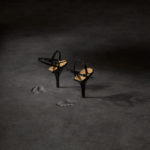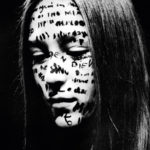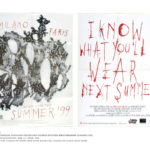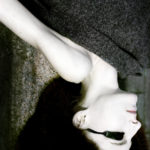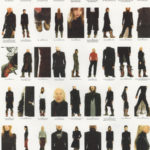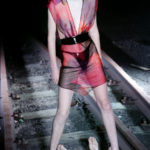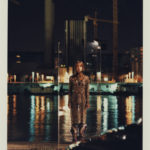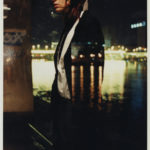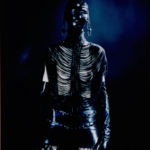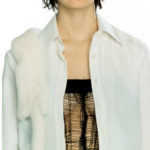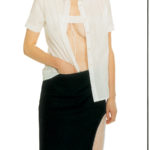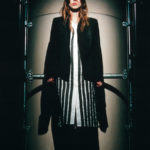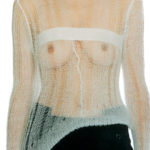JURGI PERSOONS
"i know what you'll wear next summer"
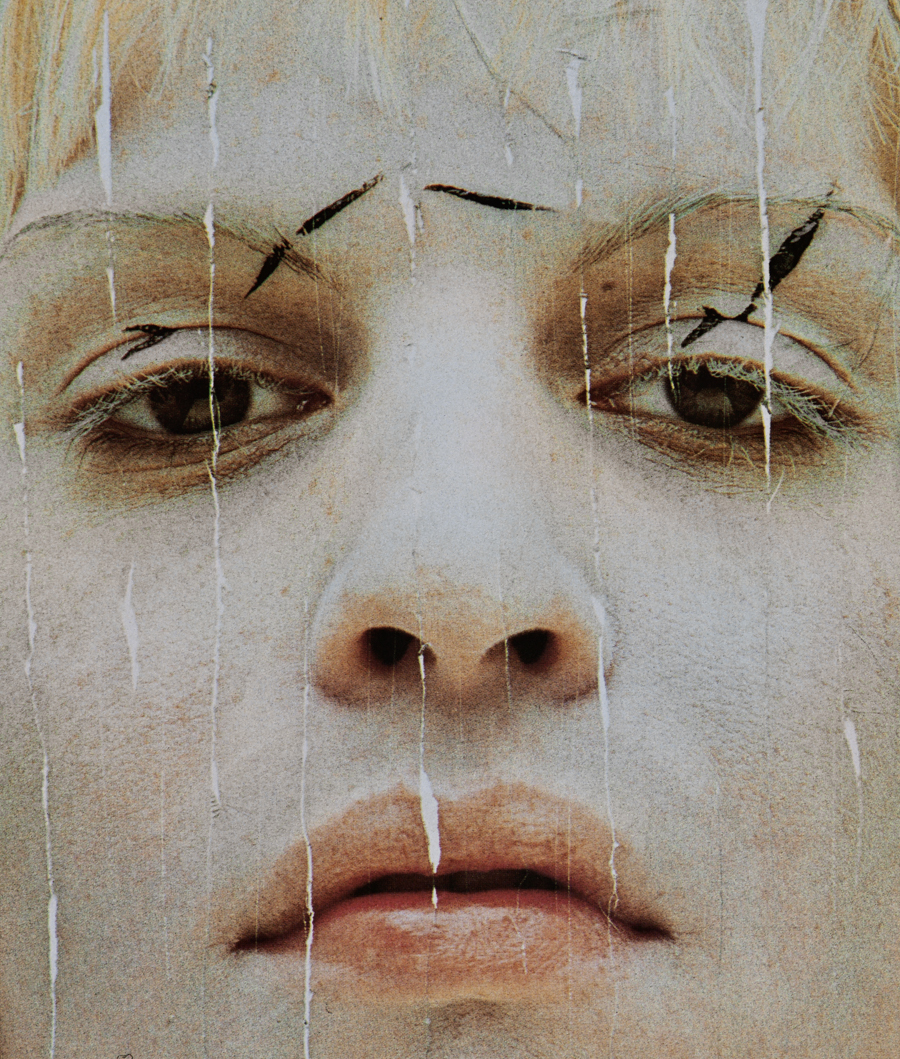 Once you said: “The worst designer is someone who is only making nice things — then you’re just a decorator”. What’s nice nowadays? — I don’t think it is any different. Content, message, story, references, a cause, engagement… They are for sure quite relevant elements in the communicative aspect of a design. They add value and significance. Without these elements a design can be extremely beautiful but apart from that the figurative aspect or well-crafted beauty has no message or meaning. Designers are strong personalities with a very personal view and decided opinion. For sure they have a story to tell. The expression of this point of view through their design is a very intriguing and fascinating way to communicate the opinion itself. A collection communicates the sources of inspiration of a designer: what’s on someone’s mind, what triggered that person, what he or she considers as ideal or what alternatives they propose. Expressions that are widely accepted as standards of “beauty” or seduction aren’t necessarily the most interesting starting point for innovation. So many things that aren’t generally considered as an ideal norm of beauty provide tons of interesting elements for astonishing interpretation and innovation. I believe good designers are brave and open-minded people: through their designs they give their comments and their never ending drive is to try alternative or new things out. Those experiments have potential but they need to be raised to a quality level of innovative design. When you look very carefully and with an open, interested mind to the world that surrounds us, you definitely will notice plenty of very fascinating situations.
Once you said: “The worst designer is someone who is only making nice things — then you’re just a decorator”. What’s nice nowadays? — I don’t think it is any different. Content, message, story, references, a cause, engagement… They are for sure quite relevant elements in the communicative aspect of a design. They add value and significance. Without these elements a design can be extremely beautiful but apart from that the figurative aspect or well-crafted beauty has no message or meaning. Designers are strong personalities with a very personal view and decided opinion. For sure they have a story to tell. The expression of this point of view through their design is a very intriguing and fascinating way to communicate the opinion itself. A collection communicates the sources of inspiration of a designer: what’s on someone’s mind, what triggered that person, what he or she considers as ideal or what alternatives they propose. Expressions that are widely accepted as standards of “beauty” or seduction aren’t necessarily the most interesting starting point for innovation. So many things that aren’t generally considered as an ideal norm of beauty provide tons of interesting elements for astonishing interpretation and innovation. I believe good designers are brave and open-minded people: through their designs they give their comments and their never ending drive is to try alternative or new things out. Those experiments have potential but they need to be raised to a quality level of innovative design. When you look very carefully and with an open, interested mind to the world that surrounds us, you definitely will notice plenty of very fascinating situations.
Each of them provides inspiring challenges waiting for interpretation. We are surrounded by situations containing a powerful message. It is good to see that nowadays, in terms of fashion, there is a growing sensibility and interest for designers who aren’t afraid to bring alternative visions and who are able to work them out in a very clever and bold way.
I think that’s very positive! If they wouldn’t get a chance, fashion would be quite boring and inactive. By exploring new aesthetics and transmitting an unconventional message, they are trendsetters. The industry definitely needs this dynamic. All the legendary designers we consider iconic and innovative (maybe because of their huge impact on fashion) are designers with a strong opinion and alternative vision. Their creative roots are also directly connected to real life or society in its total complexity. They accomplished to develop specific and uncommon visions through their innovative designs. This oversteps just making “nice” things or doing some decorative job: both an accurate message and the content occupy a central place. Not only through the design of clothes but also by creating a visual universe that surrounds this design in a complementary way. From this point of view fashion can make a significant difference regarding our society and its prejudices.
That’s why fashion is interesting and important to me.
Some people would say that the fashion you create is somewhat ethereal. Would you consider your own work “heavenly and spiritual” or rather “extremely delicate and light in a way that seems not to be of this world”? — Honestly, I never considered my work as ethereal, heavenly or spiritual. Human emotions, their consequences and obsessions combined with very specific and existing or even totally imaginary situations have always inspired me a lot. They could be romantic, sensitive, feminine, sophisticated but also trivial signs of bad taste, dark, wild or rough. It was always very personal and intuitive with an unmistaken preference for powerful and touching images. Those were the muses in my work.
Emotions are determining elements of how we live our lives. They provided so many information and inspiring elements for my creations. I never thought in advance about how my work would be received by the public. The most important for me was the fact that my work wouldn’t leave people indifferent, whether they loved it, didn’t like it or made them wonder. Being afraid of controversy results in playing too safe. This is a paralyzing state of mind for a designer. A clear and understandable connection to real life situations is essential to me. Whatever these situations are. Underground settings are so fascinating and intriguing because they leave the rules of conformity behind. My visuals and presentations give evidence of this. Away from stereotyped situations as the typical catwalk or often fashion related glamour and glitter. I was lucky in this period: a lot of things were still possible and could be made without too many obstructions. Society wasn’t so over-regulated as it is now.
Everything was less strict.
Those days it was still possible to improvise —something all young or alternative designers definitely did.
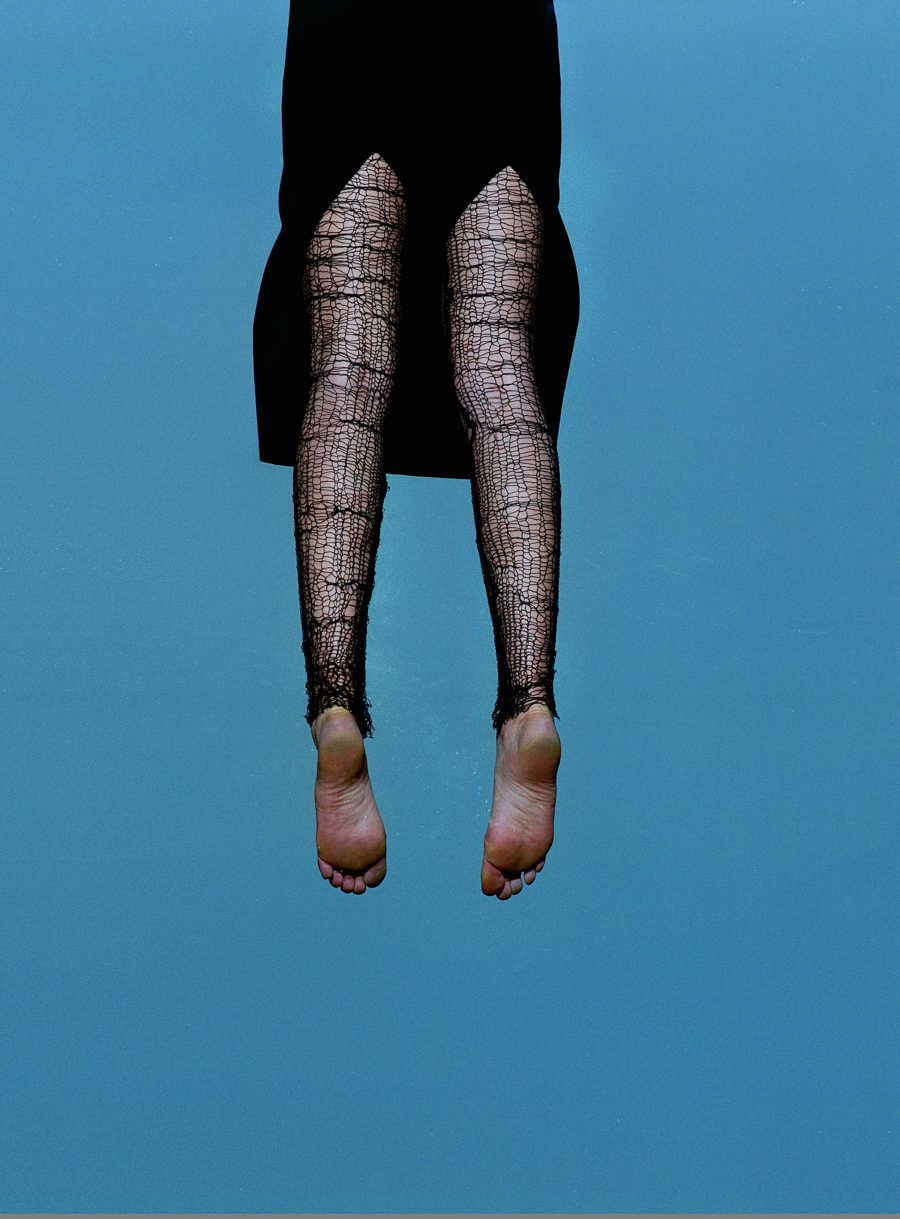
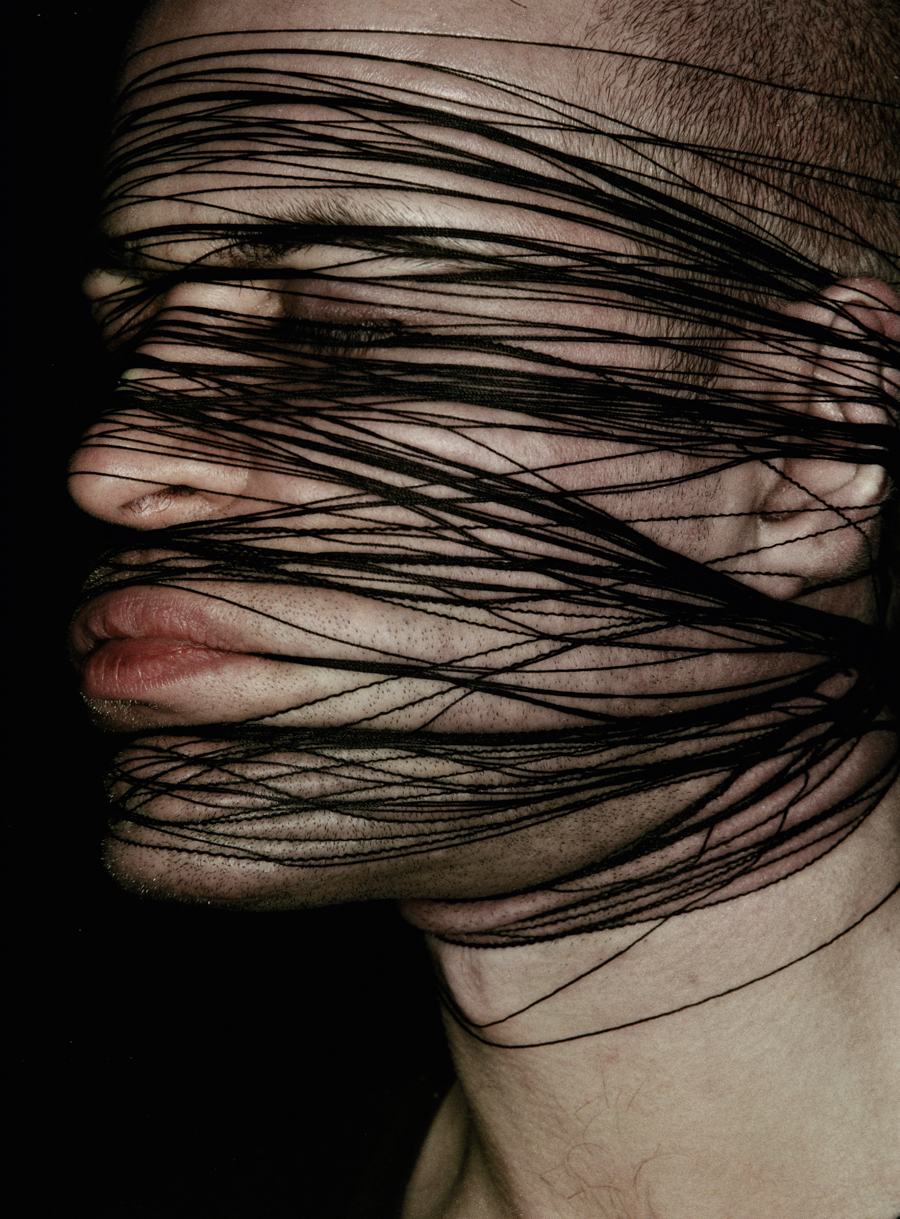
How can a fashion designer adapt to a nine-to-five job? — Being a fashion designer is not just a job: it is a lifestyle. You are a designer every second of the day and even at night. There is no turn-off button! It’s impossible to stop seeing and hearing things or thinking about situations without being inspired in one way or another. Certainly, when you are not in the studio you are surrounded by plenty of new inspiring elements. Doing the test of imagining your designs in real life situations on real people (outside the sometimes isolated “bubble” that a studio can be) is very useful and inspiring. It provides you with so much complementary information. Besides, a designer spends more time in his or her studio than a typical nine to five job, because there are so many things to do! But after the regular working hours it gets more calm, there is less interruption from outside and it’s often more relaxing, which results in a totally different sense of concentration during these moments.
It is essential to find a kind of balance and it isn’t that easy.
In the first years after my label, I took a nine-to-five job and this felt quite good in this period. It gave me some rest, which I needed. At least for a while…
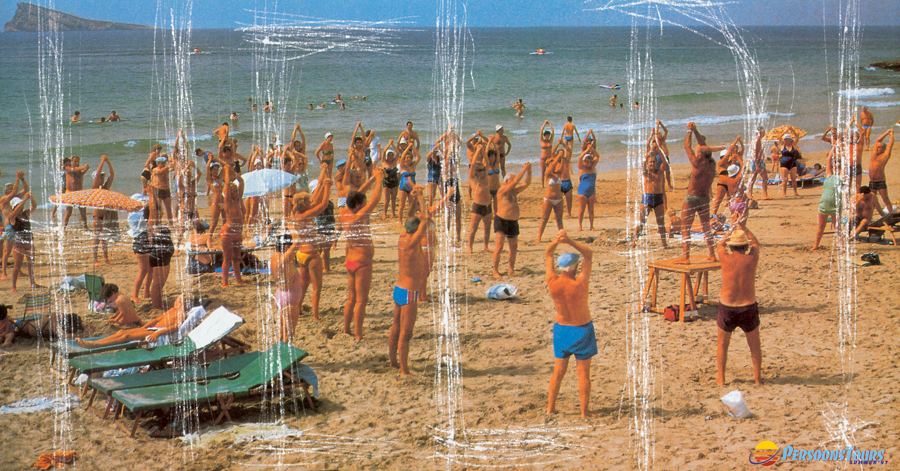
Do you have any favorite designer? Who would you have liked to dress in your collections? — I have plenty of favorite designers! I love the work of Martin Margiela, Comme des Garçons, Junya Watanabe. But I also love Yves saint Laurent, Valentino, Christian Dior or Cristobal Balenciaga. In the eighties I totally fell in love with the work of Claude Montana and Thierry Mugler. And many more!
I find it quite easy to discover plenty of interesting creations and ideas of other designers. I didn’t exactly have a specific muse or a celebrity I absolutely wanted to see in my clothes. The cult of celebrities wearing designer clothes is not interesting for me. It sometimes leads to totally ridiculous or grotesque situations.
I was always very much touched when I saw real women wearing my clothes. Even not necessarily in total looks, but I always considered more interesting and fascinating the way they combined my clothes with other clothes. At that moment, you see your clothes coming “alive”. For me, that meant an ultimate appreciation and drive to continue.
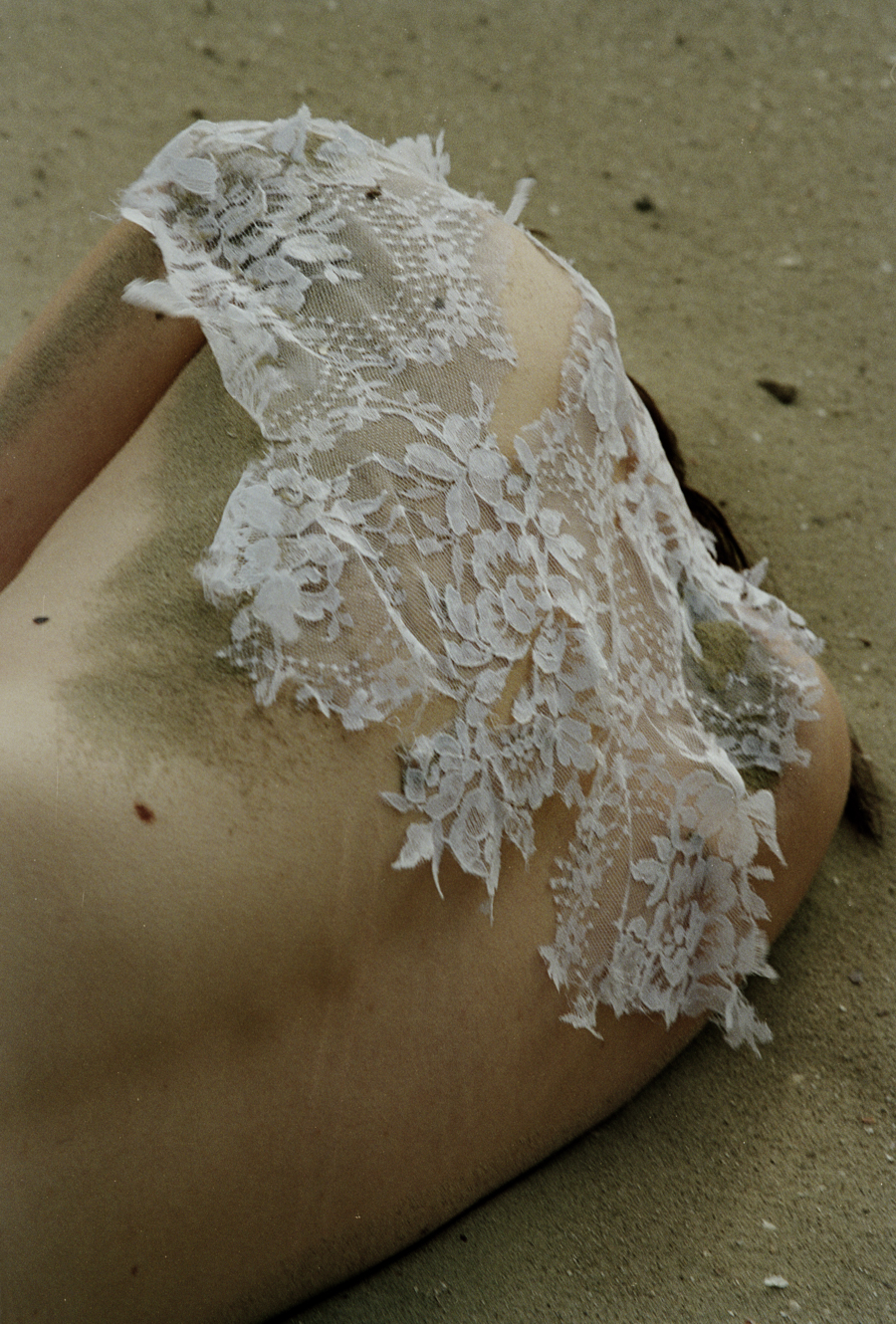 Regarding your professional career and the choices you’ve made: Is there anything you regret? — No major regrets at all. Maybe some decisions or other conclusions could have had a different impact. But that’s inherent to life and this concerns all of us. Speculation about different choices afterwards is quite useless for me.
Regarding your professional career and the choices you’ve made: Is there anything you regret? — No major regrets at all. Maybe some decisions or other conclusions could have had a different impact. But that’s inherent to life and this concerns all of us. Speculation about different choices afterwards is quite useless for me.
Having regrets doesn’t help you further either. What matters is a positive and constructive attitude in the next move you make. I think we learn every day plenty of new things and this dynamic makes life so very interesting and fascinating! I definitely have no regrets about my work.
We worked within the existing structure of fashion but succeeded to create our own authentic place and approach to it. I have so many amazing, beautiful and unforgettable memories and they absolutely rule. They contain tons of positive energy towards the future. Extremely proud of what we realized, I feel extremely blessed to have met and collaborated with a lot of talented, inspiring and nice people.
Somehow the fateful 9/11 had a huge impact in your career. Have you thought a lot about what would have been different if your collection had seen the light that day? — The impact of 9/11 to the world and society was —and unfortunately is— huge. Currently we are living in the post 9/11 period.
For the fashion business it was a very, very bad situation with significant negative financial consequences. The timing of those dreadful attacks was the start of New York Fashion week, all flights in the US were cancelled and people were afraid to take a plane and fly to Paris for the fashion week. We can only imagine now that without these attacks New York Fashion Week would have happened in the most regular way; as it should have. Our collection would have been sold in the Mrs Stella Ishii showroom, as it had happened before. And probably two weeks later, the Paris Fashion Week would have taken place in the most normal circumstances. I guess it would have been business as usual. Certainly with no immense collapse on sales. It was a financial drama for young companies that had invested everything in the perspective of further growth and expansion.
For sure a much better situation compared to the horrible facts of reality.
I can’t help but imagining your job as a professor at the Royal Academy of Art as an extremely gratifying one. Making certain subjects creative must be really important for students. But how exactly do you inspire them? — I am the head of the Textile and Fashion Department of the Royal Academy of Art. The Hague and I am also a teacher in fashion design for graduate Bachelor fashion students. This position gives me the chance of contributing to the formation of future generations of fashion designers. This is quite exciting and I am very grateful about this. The Textile and Fashion department has a very high quality level and we are lucky to have plenty of very talented students. When students are in their 4th year they have a solid base and knowledge in the diverse skills of designing. In their 4th year we listen to the stories that students decided to develop in their collection. It becomes a more “adult” and semi-professional setting.
Students are free to choose their concept.
We coach them intensively but with respect for their personal universe. It is about listening to them and guiding them through the process of their personal development including the impact this development has on their collection. It is important that their horizon is as wide as possible: so providing complementary, alternative or even opposite ideas is part of this process.
We question them a lot: why did you make this decision? What was the motivation? —We trigger them not to be too fast or easily satisfied, they have to dare to think further and beyond. They don’t have to just follow existing trends: they have to create their own statements, develop them appropriately and become trendsetters! We try to make them very confident about themselves. Being highly professional in all different aspects and being brave in their creations, with no fear. We focus on communication: their collection should communicate their point of view also without an accompanying verbal explanation. For sure it is important that their themes have an accurate message and content.
This generation has clear ideas about the type of society we’re living in. They don’t just agree with everything that happens, they have a positive but also critical attitude. This is very promising! It is our duty to encourage them to express this unique and authentic position: they are the future.
What inspires you nowadays? — I really can find inspiration in everything. That hasn’t changed. But for sure working with students and collaborating with the team of teachers is very inspiring.
What’s your view about the effect of social media on the fashion industry? — There is a quite important influence in many diverse aspects! The world is suddenly very small and extremely dynamic. Social media has made it very easy to connect with other people all over the world. It provides tons of information. Which is extremely useful. It provides an immense opportunity to show your work and also to discover the work of others. Besides, social media is definitely a huge PR and marketing platform. It has become a part of our daily life that includes immense opportunities. I do believe young designers should try to deal with this in a very smart and personal way.
They should be clever and use the opportunities social media provides but they shouldn’t feel stressed or depressed due to a risk of its (over-) exposure.
Apart from plenty of great and interesting opinions, there is also tons of crap on it! Unfortunately, not everybody’s opinion is necessarily precious or valuable. Quality is not by definition the sum of “likes” or the amount of followers you have…
Sometimes, you can notice a mass movement that most of the times doesn’t result in an intelligent or visionary opinion about a work of high quality level! Let’s say it is a new voice that comes from the streets that has to deal with an existing risk of banality.
Do you think Spain is a fashionable country? — Sure, why not. Cristobal Balenciaga, one of my favorite designers, was Spanish!
I don’t think nationalities or countries are important when it concerns fashion. Cultural aspects are much more essential. So many amazing artists, designers, architects and moviemakers, for example, are Spanish. Spain is a country with a rich tradition, great history and a fearless astonishing authenticity.
If you could choose a specific collection, concept or even a specific fashion of all times: What would you have loved to create?
It’s a difficult question… Sincerely, my own collection but maybe incorporated in an iconic, established house with a great history, amazing archives, top craftsmen and important budgets. Probably the dream of any designer!
Interview: Nazaret Yeste
All photographs: Ronald Stoops
Make-up Artist: Inge Grognard
Graphic Desing: Paul Boudens
Jurgi Persoons jurgipersoons.com

